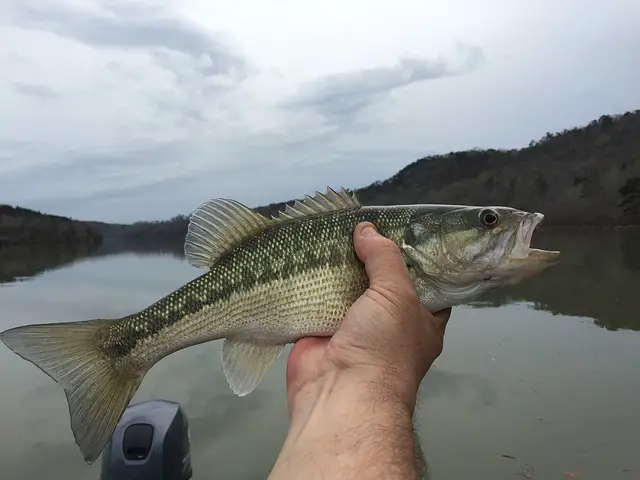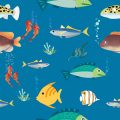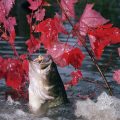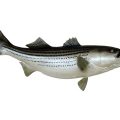Bass eat a variety of foods depending on location and time of year. They are opportunistic feeders, meaning they eat just about anything they can fit in their mouths. Their diet consists of smaller fish, crayfish, insects, and even small mammals.
Bass is one of the most popular and sought-after fish in the world. They’re an excellent target for both beginners and expert fishermen alike, so it’s important to know what they eat to catch more of them with your rod and reel. This article will cover some essential tips about bass and how to identify their favorite food sources!
How Seasons Affect the Diet of Bass
The diet of bass is impacted by a variety of factors throughout the year. The bass must prepare their bodies for the hardships that lie ahead during pre-spawn and both post-spawn eating requires that they recuperate. One food source may be more readily available during certain seasons than others. An effective fisherman will be aware of how water temperature affects bass nutrition.

What Do Bass Eat in Winter
Studying what bass feed throughout the winter is helpful for us as fishermen because it allows us to choose a bass lure that will most accurately mimic that food source. Bass consume baitfish like shad and minnows throughout the winter. They follow the same diet all year long and consume less of it.
What Do Bass Eat in Spring
Bass in the spring are not choosy eaters and will eat everything they can get their mouths on. A more accurate representation of the available forage size may be achieved by presenting bigger baits. Bass eat mostly smaller fish like shad, bream/bluegill, minnows, and other species.
What Do Bass Eat in Summer
Bass starts to eat vigorously once the spawn is over. Most of a large bass’ summertime diet consists of bluegills, shad, golden shiners, and frogs. Frogs are the most outstanding bass bait you can locate for the middle to end of the summer, while bluegills and shiners are lovely all year round.
What Do Bass Eat in Fall Season
In contrast to the summer, when bugs and other shallow-water creatures provide simple food to graze on, autumn is all about getting ready for winter. Smaller fish have a great deal of appeal to bass.
In order to be ready for the slower months when their metabolism won’t support active hunting, these smaller fish constitute a calorie-dense target of opportunity. Slow-moving but profitable prey includes unaware bluegill, shad, suckerfish, tiny carp, and shad.
How Habitats Affect Bass Diet
The bass’s environment is a major factor in determining what it eats. For example, a largemouth bass living in a small pond will most likely be more successful at catching sunfish than one living in an ocean. You can bet that your local lake or pond has plenty of minnows and other smaller fish for them to feast on. However, if you find yourself in an area where there aren’t many food options available (such as using live bait), then you should consider using artificial lures instead. This way, your chances of getting some bites increase dramatically.
When Do Bass Eat
Bass eat all year round and will be most active at night, though they will also eat during the day when it is light. Bass are most active during the day but will still feed at night if there’s enough light to see by. The best time to catch bass is when they are most active: the morning and late evening. When the water is warmer, the bass is more active in the early morning. In colder weather, they spend some time resting during the heat of the day and feeding more aggressively in dusk and darkness.
The best times to catch bass are during the summer and spring. During these seasons, bass feeds heavily on insects as they’re preparing for the spawning season. In autumn and winter, they become less active and will often retreat into deeper waters where they can find shelter from the cold temperatures. During these months, you’ll have to use larger baits or heavier lures in order to tempt them out of their hiding places.
Can Bass see in the Dark?
You may be wondering how bass can see in the dark. Bass has a large eye, which allows them to see better than other fish. The lens is also larger, allowing it to focus on objects much further away. Their retina is much bigger and contains more rods than cones, so they can see well in dim light conditions like night fishing or when there’s not enough sunlight for plants to grow.
The pupil of bass is larger than most other species’ pupils as well; this allows more light into their eyes at once so they can detect predators more quickly and easily avoid them by hiding in dark places where they won’t be seen by their predators (which tend not to look that hard).
Times of Bass Feeding
Fish like bass hunt by eyesight. Their primary feeding method is influenced by the weather and light. Bass may hunt most successfully between dawn and dark. Bass enjoys the ideal balance between total darkness and strong light, unlike many other fish that pursue their food under such conditions.
Going bass fishing early in the day as the sun is about to rise or late at night when the light is already comfortably subdued is what I would advise. These times are ideal for bass besides light levels since they are cold-blooded and enjoy lower temperatures.
Conclusion
Bass has a varied diet that can change depending on the season and the habitat they live in. Bass eat everything from frogs to baitfish and even some larger mammals like mice.
Bass are opportunistic feeders, which means they will take advantage of any food source in their environment or a food source that is introduced into their environment by humans. The best way to determine what type of diet bass have is to observe them feeding in their natural habitat.












Pingback: Are Bass Cannibals? | Reel Fishing Guru